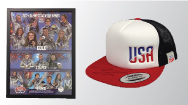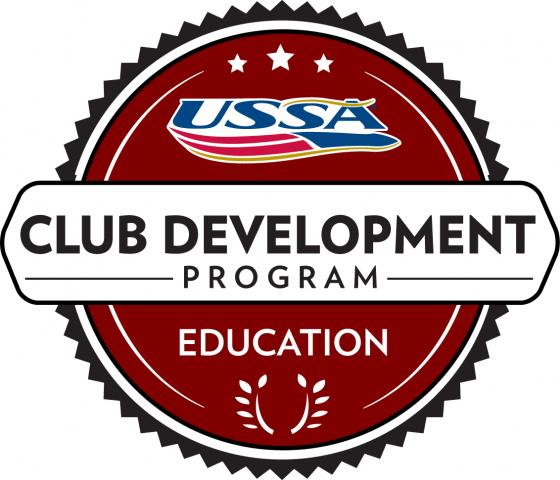Club Marketing and Materials
Club Marketing and Communications Plan
Marketing your program involves much more than flyers and advertisements. It includes everything from your special events to your public image to the quality of your customer service. Careful planning and organization are required to reach the widest possible audience within your budget.
Create a plan outlining annual marketing strategies and how to evaluate their impact. Consider your target audience, timeframe and cost for each item. Make the most of your free marketing and consider your personal contacts and the skills of athletes’ parents. Compiling information into one document will help you meet deadlines and save the hassle of searching through information. Your SWOT analysis can help you define marketing goals. General skiing and snowboarding marketing and promotion should be ongoing, and specific marketing for the club should begin at least six weeks prior to the registration deadline.
Organizational websites have become an expectation. Managed well, your site can save time and money by streamlining time consuming processes like registration and answering basic questions. It is a low-cost method of attracting new skiers and riders and communicating with families. An organized, aesthetically pleasing website shows your professionalism and helps participants and/or their parents gather information before coming to you with more detailed questions.
Websites should not just be about programming. This is your platform for anyone interested in the club including potential donors, potential sponsors, community members, etc. It is important to include information about the history, mission, vision, values, and goals of the organization, as well as information about donating or volunteering, the board of directors, and other partnerships and collaborations. This is a great place to give credit to all the different entities that contribute to the success of the club.
Word of mouth is by far the most effective and least expensive form of marketing. Foster it in every way possible! Spread accurate information through meetings and email updates. Train your staff on customer service skills to help maintain a fun and supportive environment for all skiers and boarders. Encourage satisfied club participants and/or parents to help spread the word by distributing materials to their peers and their workplaces.
Community involvement is also an enormous way to market your club. Joining forces with other organizations does more than give your skiers and riders new opportunities and expand your professional network. In addition to creating a positive impact on more lives, you will expand your program’s value in the eyes of the community members and prospective club participants and/or their parents. Using Local Media
Creating advocates for your club within your local media is imperative. Contact your local newspaper, TV station and radio – and not just once. Find something intriguing and interesting about each event that your local media will want to cover. This can be an athlete, coach, sponsor, or a change in the resort - anything to keep it fresh. And finally, make yourself and your club available to help them tell your story or, better yet, write it yourself and give them the credit!
Media and Public Relations
Media relationships are the assigned responsibility of the media coordinator, the coaches or the club directors. After every competition the results should be sent in to the local paper and whoever else is on your club media list. Photographs and an accompanying article should also be included. A team media guide should be developed, with a program description, names and addresses, photographs, history, facilities, hot future prospects and other relevant information. This is distributed to potential sponsors, at fundraising events, within the community at large and wherever possible. Know your audience and develop targeted pieces.
The club newsletter should be distributed well beyond the current membership as a means of fostering relationships with supporters. Past members and other community partners of the club should get these publications and be invited to events.
Parents should be involved in clinics and orientation meetings, where their role in the club is defined and rules of the program are discussed. Parents should be asked to participate as volunteers for club competitions and should be well informed on officials training clinic dates, coaching education opportunities and should be recognized for putting time and energy into the program.
Attracting new members – The strongest tool that clubs can utilize to market themselves are the positive benefits of sport participation like values, life skills, friendships and leadership qualities.
Attracting new members is more than posting a flyer, designing a new logo, or getting an article in the local paper; marketing for ski and snowboard clubs is about communicating the benefits of your club to members, prospective families and potential community supporters.
Why Market Your Club?
The obvious reason most clubs market is to recruit new members into their program, but thinking about marketing can also help a club to:
With this said, marketing should not be mistaken for development or fundraising. While a good marketing plan may help donors gain more exposure to your club, marketing will
not typically lead to donations (especially more significant ones). For that, you must employ some of the development strategies discussed above in the Finance and Funding Chapter.
Recruiting and Retention
Both attracting new members (recruiting) and increasing skier/rider retention can help to grow your club. While these resources focus on attracting new members, many of the concepts and even some of the materials can be used with your current membership. Just remember when growing your club think about both recruiting and retention.
The First Step: Knowing Who You Are
The primary goal of marketing is to let customers know why they would benefit from being associated with your club. But first, you need to establish the identity and value of your club. Spend some time thinking about three to four benefits and values that you want to associate with your club. These might already be listed in your club’s mission or vision statement. Once you have figured this out, make sure everyone affiliated with your club knows them as well as you do. The case statement discussed above can help double as a foundation for both development and marketing rhetoric.
Keep in mind that while in some ways you are marketing a product just like any other business, you are also marketing something completely different – a lifestyle, values, physical health, behavior change, skill acquisition and achievement. This is a different environment that involves social marketing. For a good comprehensive guide on this subject see: Social Marketing: Influencing Behaviors for Good by Philip Kotler and Nancy R. Lee.
The resource above describes social marketing as:
A process that applies marketing principles and techniques to create, communicate and deliver value in order to influence target audience behaviors that benefit society as well as the target audience.
Social marketing is a process for creating, communicating and delivering benefits that a target audience(s) wants in exchange for audience behavior that benfits society without financial profit to the marketer. (Bill Smith, 2006)
Social marketing is the application of commercial marketing technologies to the analysis, planning, execution and evaluation of programs designed to influence the voluntary behavior of target audiences in order to improve their personal welfare and that of their society. (Alan Andreasen, 1995)
Social marketing is the systematic application of marketing concepts and techniques to achieve specific behavioral goals relevant to the social good. (Jeff French and Clive Blair-Stevens, 2005)
Your Chairlift Pitch
Can you summarize your club in less than 30 seconds? Being able to state what makes your club the best or most unique in 30 seconds or less is necessary for a proper sales pitch. You need to be able to spark interest in your club with a minimum of words. Like the case statement and fundraising/development strategies above, your pitch should focus on the needs that the club provides for with families, athletes and the community. It should also include what your personal passion is with regards to your involvement.
Who is Your Customer?
Do you know who is making the decision to join your club? Sometimes it might be the athlete and sometimes it might be the parent. Your customer could also be a local businessperson who you are trying to get to sponsor your club or competition. You also need to know what your customer hopes to gain from your club – what are their needs? Do they want to make it on a National Team? Or do they just want some basic fitness? No matter the reason, customize your message for that particular audience and then target them. Remember, you are not just selling a product. You are providing a potentially life-changing experience. You want to focus on potential life behavior changes. You want to let them know how your club is uniquely positioned to meet their needs.
Developing Materials
Once you know the answers to the questions above, developing the materials is the easy part – so don’t reinvent the wheel! Your mission, your values, your culture, and your social marketing messages are all aligned, so use them!
No matter the vehicle you use to communicate, your marketing message will be created using the answers above. Your materials should convey to your target audience the exact benefits of joining your club and what makes you unique. More than likely there is someone affiliated with your club (assistant coach, parent, etc.) that can do some design work for you to help you best communicate the message. Also, remember you do not always need physical marketing materials. Word of mouth is often the most powerful marketing tool you have available to you. Research will show that glossy rack cards or tri-folds universally distributed with no plan will have very limited effect and wind up being quite expensive. Often, more low cost and strategic marketing is the answer.
|


